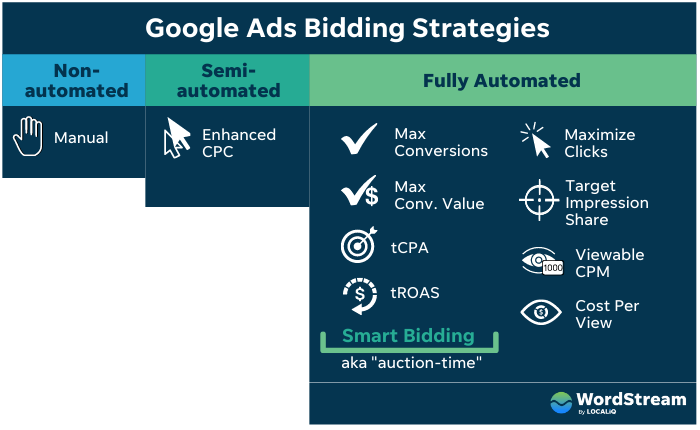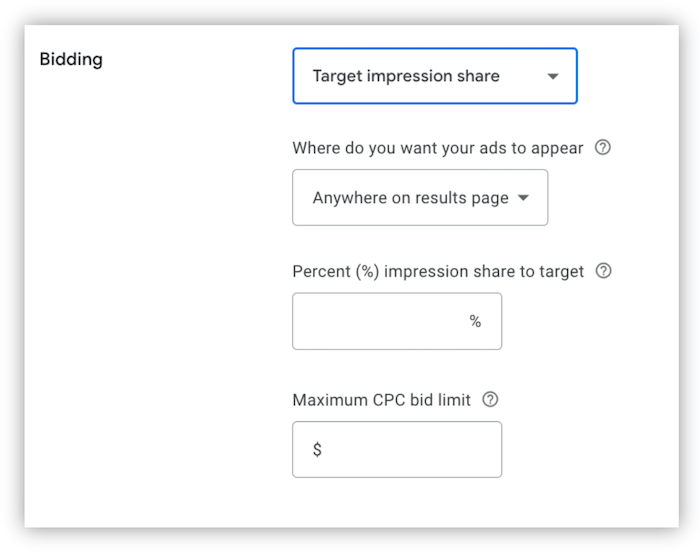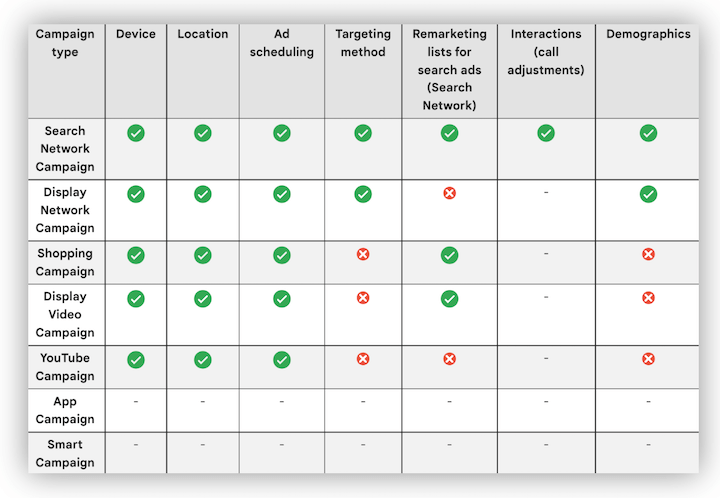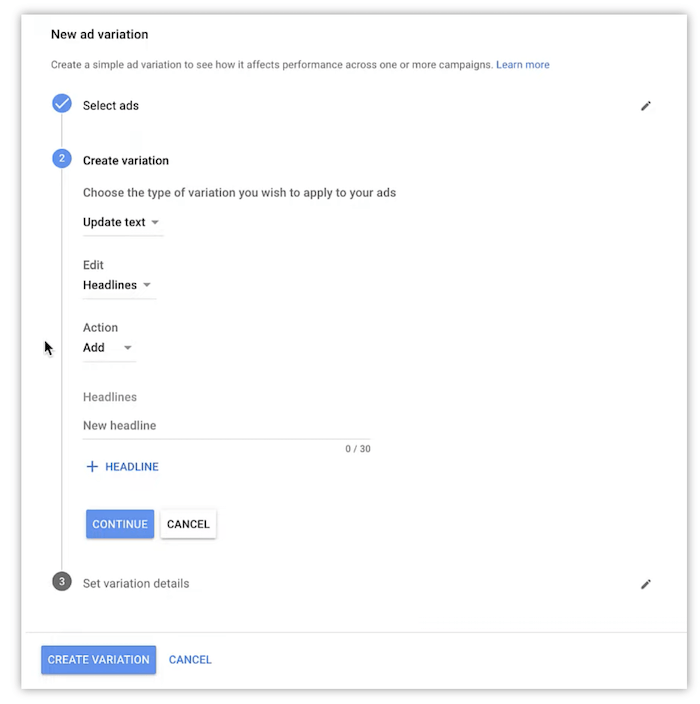If automated bidding strategies are handling my bids for me, do I even need to pay attention to bidding? It’s pretty easy to ask this question, given the rise of automated bidding strategies (and automation in Google Ads in general).
The short, emphatic answer is YES.

The longer answer is still the same YES, but with a number of nuanced ideas about how and why you should pay attention and regularly check in on your bidding strategies.
So with that, here are my suggestions for managing your bidding strategies in the world of automated bidding.
Bid management tips in a world of automation
Before we dive into the tips, a quick refresher on bidding for those who need it:
When running Google Ads (or any PPC campaign, for that matter) there are a number of approaches you can take in how much you bid, based on how much budget you have, how fast or slow you want to spend it, what your objective is, the campaign’s performance, and more. This is your “bidding strategy.”
The tips below are going to help you in understanding the role you will manually play in setting, adjusting, and managing your bids in a world where automated bidding predominates.
1. Start by tracking everything properly
I cannot stress this enough: without proper tracking, automated bidding strategies won’t generate the performance you want. If you’re optimizing for anything aside from traffic, it’s imperative that you have conversion tracking, and in some cases revenue tracking, set up on your site and that you have all of your primary goals focused on those outcomes. Ok, with that PSA out of the way…
![]()
2. Choosing the right strategy
Once you have all of your conversions tracked properly, the next critical step is to choose the right bid strategy for your goals. Depending on the goals of your campaigns, different bid strategies might be a good fit while others could be a big miss.
For example, if you’re trying to sell products online, you might be able to leverage anything from Manual CPC, to Enhanced CPC, all the way through to Target CPA or Target ROAS.
If you’re trying to generate leads online, however, you may be able to use the first three, but unless you’re working with some solid CRM data, you likely aren’t going to see the benefit from Target ROAS bidding.

Some tips:
- Do your research. There are plenty of help articles, blog posts, and videos out there to help you understand what each bidding strategy does to make sure you’re starting with the right one.
- Make sure you have enough data to support this bid strategy decision. Although Google says otherwise, in my opinion, you really should have SOME level of conversion data in the account before you start utilizing strategies focused on conversions or cost per conversion. This ensures the bidding algorithm will have some insights to start with and won’t be starting completely from scratch.
If you don’t have that traction to start, it might be best for you to use Manual or Enhanced CPC to start, potentially even Maximize Clicks, then shift to another strategy later on. (We’ll talk more about changing strategies later in this post.)
3. Use the levers you have
Depending on which bid strategies you use, Google gives you a decent amount of control to help influence the performance of your campaigns.
For Impression Share bidding, you get to choose whether you’re targeting all Impressions, Top of Page, or Absolute Top of Page and then the percentage you have in mind.

The Maximize Clicks strategy can be great to drive volume, but if you’re trying to keep your CPCs down, you can leverage the Max CPC bid limit in the settings section.

The same goes for Target CPA and Target ROAS within the Maximize Conversions and Maximize Revenue bidding strategies. You get to decide what goals you want your campaigns to shoot for. You don’t have to only stick with Google’s limits. But that opens up a new can of worms… we’ll get to that after a brief note about levers you might not have.
4. Be aware of the levers you don’t have
One of the things I love about Manual or Enhanced CPC bidding is the number of controls you’re given to adjust bids. For real, there are so many bid modifiers in a manual campaign:
- Time of day
- Day of week
- Audiences
- Location
- Device
- Demographics
Each of these lets you bid up or down on a percentage basis to get more or less aggressive on any specific subset of your audience.
But with automated bid strategies, the vast majority of these are removed. All of those decisions are left to the machines and calculated in real time.
For those of you naysayers, I understand that Google still lets you type in a number into the bid modifier field for audiences on a Target CPA campaign, but the algorithm is ignoring it.
Here is the only set of bid modifiers that work with any given bidding strategy. So when you’re determining what strategies make the most sense for you, take into account the levers you want/need to be able to use to optimize your campaigns and how your choice of bidding strategy will impact that control.

5. Understand how your limits impact performance
Setting a Target CPA (cost per action) is a great way to control costs in Google Ads. I personally use this strategy in most of my lead generation accounts because we know what a lead needs to cost for us to be profitable.
With this level of machine learning, many advertisers get excited to consistently pull back on CPA targets, lowering them regularly to bring costs down. But setting Target CPA goals that are too restrictive can backfire.
If your CPA goals are too low, Google will struggle to gain a foothold that meets your performance goals and will start to restrict ad impressions. This lowers your overall number of impressions, clicks, and eventually conversions. In my experience, once this gets too low, your CPA also spikes, doing the exact opposite of what you want.
On the opposite end of the spectrum, if you loosen or raise your CPA target to a higher amount, Google usually gets more aggressive and shows your ad more often, typically increasing volume and costs. While that might sound a little worrying, I’ve seen many cases where increasing the Target CPA simply gave Google more data to work with and our actual CPA actually went down.
Now it might sound like I’m using this section to convince you to increase your Target CPA goals and spend more money. But that’s not quite right. My point is more for you to make sure you’re not being TOO restrictive, then test incremental adjustments up or down based on your performance and volume goals to see what works in your account. You may be surprised that the actual impact of your changes might go against your first instinct.
6. Know when to change or test new strategies
Similar to choosing the right option to start, it’s also important for you to pay attention and know when you might benefit from a bid strategy change.
- Are you not seeing the performance you want and changing the controls isn’t working?
- Did your overall marketing objective change for that campaign?
- Have you reached a new data threshold and can now upgrade from Maximize Conversions to Target ROAS?
- Or did your data flow slow enough to where you might need to downgrade?
Regular reviews of your bidding strategies don’t always need to be robust and intense for you to determine whether it might be time to change.
You also don’t have to make the change at the first sign of distress or opportunity. Try setting up a Google Ads Campaign Experiment to see which strategy performs best (here’s a tutorial video on campaign experiments to help you out!).

You can even do this with nuances within a single bid strategy. Maybe you’re curious if increasing your ROAS target will help you be more efficient without sacrificing volume. Why not test it? Create a duplicated campaign, set your changes up to sync from one to the other, and change the ROAS target on your experiment to see how it does.
Stay in control of your bids in Google Ads
While automated bidding strategies might have taken over many of the optimizations that we advertisers used to make, that doesn’t mean that we can be completely tuned out. Whether it’s starting off on the right foot, using the available controls, or knowing when to test or change strategies, there’s plenty of influence you can still have to make sure you’re getting the most from your account.
The post 6 Tips for Effective Bid Management in a World of Automated Bidding appeared first on WordStream.




Recent Comments